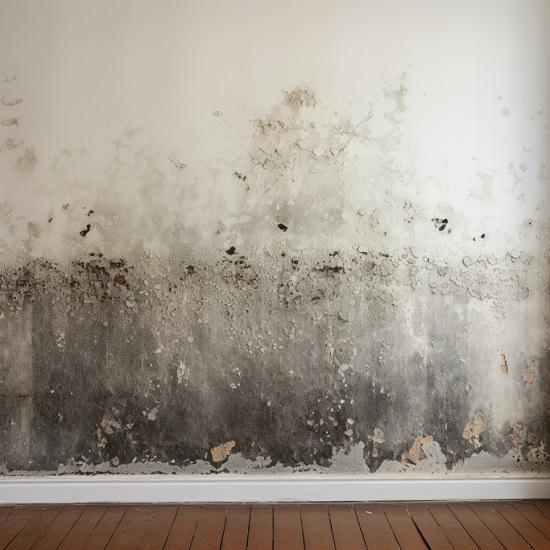Comprehensive Post Mold Remediation Procedures
Comprehensive Post Mold Remediation Procedures
Blog Article
Your Ultimate Overview to Blog Post Mold And Mildew Remediation Techniques
In the results of mold problem, recognizing how to properly eliminate the mold and stop its reoccurrence is extremely important for maintaining a healthy interior environment. From selecting the ideal cleaning and sanitizing approaches to implementing strategies for lasting mold prevention, each step in the remediation journey plays a critical function in making certain a successful result.
Understanding Post-Mold Removal Process
After completing the mold remediation process, it is important to recognize the post-mold remediation techniques that are essential to guarantee a comprehensive and efficient clean-up. Once the mold has been removed, the next action includes cleaning and sanitizing the influenced areas to avoid any regrowth of mold. This consists of using specialized cleaning representatives to wipe down surfaces and kill any remaining mold and mildew spores. It is vital to dry out the area entirely to dissuade the development of mold and mildew in the future (what to do after mold remediation). Correct air flow and dehumidification can assist in this process.
Furthermore, carrying out a final examination post-remediation is important to make sure that all mold and mildew has been efficiently gotten rid of. This inspection needs to include an extensive aesthetic check along with perhaps air sampling to verify the lack of mold and mildew spores airborne. Added removal may be needed if the examination exposes any remaining mold and mildew. Last but not least, educating owners on preventative steps such as controlling moisture levels and quickly addressing any type of water leakages can aid keep a mold-free atmosphere.
Effective Cleaning and Decontaminating Techniques

Stopping Future Mold Growth

Relevance of Proper Ventilation
Proper ventilation plays a vital duty in preventing wetness buildup, a vital consider mold growth within interior atmospheres. Reliable air flow systems assist eliminate excess moisture from the air, decreasing the opportunities of mold and mildew spores locating the wetness they require to spread out and sprout. Without appropriate air flow, indoor rooms can come to be a breeding ground for mold, leading to potential health and wellness risks and structural damage.
By guaranteeing appropriate air circulation, air flow systems can additionally aid in drying moist areas quicker after water damage or flooding incidents, even more preventing mold development. Post Remediation verification. Precede like washrooms, kitchens, cellars, and attics where wetness levels tend to be higher, setting up and maintaining efficient air flow systems is crucial in preventing mold and mildew infestations

Monitoring and Upkeep Tips
Offered the important function that correct air flow plays in avoiding additional reading mold and mildew development, it is vital to establish reliable monitoring and upkeep tips to ensure the continued functionality of air flow systems. Normal inspections of air flow systems should be carried out to look for any indicators of obstructions, leaks, or malfunctions that can impede correct airflow. Surveillance moisture degrees within the residential property is additionally vital, as high moisture can add to mold and mildew development. Installing a hygrometer can assist track moisture degrees and sharp see here property owners to any kind of spikes that might call for attention. Furthermore, making sure that air filters are routinely cleaned up or replaced is vital for keeping the effectiveness of the air flow system. Carrying out a routine for regular maintenance tasks, such as duct cleaning and heating and cooling system assessments, can aid prevent concerns before they escalate. By staying mindful and proactive to the condition of air flow systems, homeowner can effectively reduce the threat of mold and mildew regrowth and preserve a healthy and balanced interior environment.
Final Thought
Finally, post-mold removal strategies are vital for making certain a clean and safe atmosphere. Recognizing the procedure, applying efficient cleaning and sanitizing techniques, stopping future mold growth, maintaining proper air flow, and mold removal diet normal tracking are all essential steps in the removal procedure. By adhering to these guidelines, you can effectively eliminate mold and mildew and prevent its return, advertising a healthy and balanced living or working room for all passengers.
In the consequences of mold problem, understanding how to properly remove the mold and prevent its reoccurrence is paramount for preserving a healthy and balanced indoor setting. Once the mold and mildew has actually been gotten rid of, the next step includes cleansing and disinfecting the affected locations to stop any regrowth of mold and mildew - testing air quality after mold remediation. After eliminating visible mold and mildew development, it is vital to clean up all surface areas in the affected location to remove any type of continuing to be mold spores. To even more boost mold prevention actions, it is essential to deal with underlying problems that at first led to mold development.Provided the crucial duty that appropriate air flow plays in avoiding mold growth, it is important to establish reliable surveillance and maintenance tips to make certain the continued capability of ventilation systems
Report this page